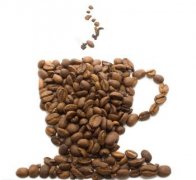The barista taught you how to taste coffee and how to determine the freshness of coffee beans.

Freshness is the life of coffee, how to determine the freshness of coffee beans?
There are three steps: smell, look and peel.
Smell: close the coffee beans to the nose, deeply smell, is it possible to clearly smell the aroma of coffee beans, if yes, on behalf of coffee beans fresh enough. On the contrary, if the aroma is weak, or if it has begun to appear greasy, it means that the coffee beans are completely stale. Such coffee beans, no matter how much effort you spend to grind and boil, it is impossible to cook a good cup of coffee.
See: Spread the beans out on your hand to determine the origin and type of coffee beans, and also to determine whether the beans are roasted evenly.
Peel: Take a coffee bean and try to peel it with your hand. If the coffee bean is fresh enough, it should be easy to peel it apart, and there will be a crunchy sound and feeling. If the coffee beans are stale, you may find that it seems like you have to struggle to separate a bean. There is another important point to observe when peeling coffee beans, that is, to see if the fire is even when roasting. If uniform, the color of the outer and inner layers of the beans should be the same.
If the color of the outer layer is significantly darker than the color of the inner layer, it means that the heat during roasting may be too high, which will also affect the aroma and flavor of the coffee beans.
The difference between large coffee beans and small coffee beans
For the same kind of coffee, the bigger the beans, the higher the grade, and the smaller the beans, the lower the grade, the cheaper. Of course, there are differences in taste. The bigger the beans, the stronger the coffee taste. However, in addition to high-grade coffee, other coffee classification levels are not very strict, for example, the center grade beans can account for 60%. Then beans one level higher and beans one level lower will both account for 20 percent. Therefore, sometimes roasted according to the labeled center grade standard, another 40 percent of coffee is not roasted under optimal conditions.
The division of new beans and old beans in coffee beans and the time to market
New coffee and old coffee of the same variety and degree of roasting will taste significantly different, of course, the new beans are more aromatic. Although the new beans will lose a lot of water and turn white after several years of preservation, the fragrance will not be greatly affected.
To make it simple:
Nose smell: fresh coffee beans smell fragrant, otherwise tasteless or bad smell.
See: good coffee beans are complete in shape and rich in size. Otherwise, the shape is incomplete.
Hand Press: Fresh coffee beans are crispy when pressed, and there is fragrance floating out when cracked.
Color: dark with black coffee beans, brewed coffee with bitter taste; yellow coffee beans, brewed coffee with sour.
Important Notice :
前街咖啡 FrontStreet Coffee has moved to new addredd:
FrontStreet Coffee Address: 315,Donghua East Road,GuangZhou
Tel:020 38364473
- Prev

Sensory characteristics of Italian concentrated Common sense Espresso Coffee
The sensory characteristics of Espresso coffee the warm color of the foam, the strong and wonderful fragrance, the soft and smooth liquid like velvet, and the strong and persistent taste, all of which are presented in a well-brewed cup of espresso coffee, provide drinkers with the pleasure of smell, taste and vision. Only hearing is excluded from the multiple senses.
- Next

Yunnan coffee variety bourbon bourbon coffee bean variety
At present, catimor is the most widely planted in Yunnan, and a small amount of typica,bourbon is planted in Baoshan. Although they all belong to Arabica species on a large scale, these varieties are very different in nature. Iron pickup typica: the most classic high-quality Arabica species, many commercial improvements are derived from this. It is recognized that the taste is excellent.
Related
- Beginners will see the "Coffee pull flower" guide!
- What is the difference between ice blog purified milk and ordinary milk coffee?
- Why is the Philippines the largest producer of crops in Liberia?
- For coffee extraction, should the fine powder be retained?
- How does extracted espresso fill pressed powder? How much strength does it take to press the powder?
- How to make jasmine cold extract coffee? Is the jasmine + latte good?
- Will this little toy really make the coffee taste better? How does Lily Drip affect coffee extraction?
- Will the action of slapping the filter cup also affect coffee extraction?
- What's the difference between powder-to-water ratio and powder-to-liquid ratio?
- What is the Ethiopian local species? What does it have to do with Heirloom native species?

